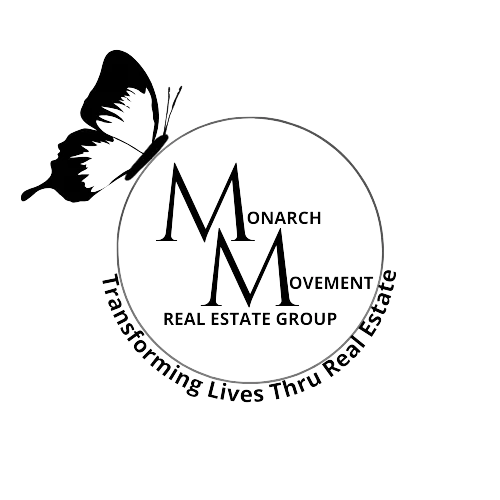Industry News

📝 Resilient Routines – Building Wellness Habits That Last
📝 Resilient Routines – Building Wellness Habits That Last
In the ever-evolving world of women’s health and fitness, one truth remains: it’s not the perfect plan that changes your life—it’s the consistent one.
Resilient routines aren’t built on willpower or extremes. They’re forged through intention, adaptability, and honoring who you are right now. Especially for women navigating the unpredictable seasons of life—motherhood, careers, hormones, caregiving—routines must be flexible and firm. They must bend but not break.
This blog is your roadmap to building a wellness routine that lasts—and loves you back.
🧠 The Psychology of Change
Let’s start with the science.
Behavioral research shows that sustainable change stems from identity-based habits, not motivation alone. James Clear, author of Atomic Habits, writes: “You don’t rise to the level of your goals; you fall to the level of your systems.”
Translation? You don’t need more discipline—you need better anchors.
That means:
Linking habits to your identity (“I’m a woman who moves daily”)
Creating environments that support action (gear ready, reminders set)
Making habits so small, they’re hard to fail
This approach works because it removes the shame spiral. Instead of “I failed my 6-day workout plan,” you celebrate showing up 3 times a week for a month.
And for women, especially, that shift from performance to consistency can be life-changing.
💪 Why Women Need a Different Wellness Model
Most fitness plans were never built for us.
They ignore the rhythm of the menstrual cycle, the hormone flux of perimenopause, or the deep fatigue of postpartum. They’re designed around 21-year-old male bodies and assume we all recover the same way every day. (Spoiler: We don’t.)
So what does a woman-centered wellness routine look like?
It adapts to:
Hormonal shifts
Emotional cycles
Family seasons
Mental load
And it prioritizes:
Movement that energizes, not depletes
Nutrition that fuels, not punishes
Sleep, boundaries, and self-compassion
A wellness routine that honors your reality is the only one you’ll stick with.
🔑 The 5 Pillars of a Resilient Routine
Let’s break it down:
1. Simplicity
Start with 1–2 actions that take under 5 minutes.
Examples:
10 bodyweight squats while brushing your teeth
2 minutes of breathwork after kids are asleep
Laying out your leggings and sports bra at night
2. Frequency Over Intensity
Forget beast mode. Studies show moderate consistency trumps random intensity every time.
Move daily. Walk. Stretch. Do mobility work. You’ll feel better, and your nervous system will thank you.
3. Environment Design
Your surroundings shape your success.
Try:
Storing dumbbells next to your desk
Using sticky notes with affirmations on your mirror
Prepping smoothies at night for your morning mood
4. Habit Anchoring
Pair a new action with an existing one.
Examples:
After you make coffee, do 10 lunges
After school drop-off, walk for 20 minutes
Before bed, stretch for 3 minutes and write down your wins
5. Emotional Reward
Track how you feel, not just what you do.
Did the walk clear your head? Did the water help your mood? Build internal wins, not guilt.
💃 Fitness as a Lifestyle, Not a Season
No more “summer shred.” This is about sustainable strength.
Create a week that might look like:
🏋️♀️ 3 strength workouts (20–30 min each)
🚶♀️ Daily walk or mobility break (even 15 min counts)
❤️ 1 long cardio effort (hike, bike, dance, you name it)
✍️ 5 minutes of journaling or meditation
Small wins add up. That’s how real change works.
🔍 Track Progress Without Obsession
You’re more than a step count or scale number. Here are better trackers:
Energy levels before and after workouts
Mood scores or gratitude notes
Mobility range (touch your toes? squat deeper?)
How often you showed up, not how long you stayed
Progress is feeling better in your body—not measuring your worth against someone else’s.
🧰 Tools That Help Habits Stick
✅ Mama Motivation Fitness Journal – Track workouts, meals, and feelings without guilt
✅ Affirmation Tanks – Wear your mindset, especially on hard days
✅ Smart Reminders – Use phone alerts or sticky notes for nudges
✅ Community – Join a group, text a friend, share your goals
✅ Permission to Pivot – Adjust weekly. Don’t start over—shift gently
Remember: Perfect is not required. Present is enough.
🌙 Hormone-Aware Wellness Planning
If you’re cycling, here’s a guide:
Menstrual Phase (Days 1–5): Walk, rest, gentle yoga
Follicular Phase (Days 6–13): Best time for strength and new goals
Ovulation (Days 14–16): High power—push harder if you feel good
Luteal Phase (Days 17–28): Slow down, nurture recovery, hydrate
If you’re in menopause or postpartum, track energy and mood weekly. Let you be your guide.
💬 Real Women, Real Routines
Samantha, 39, uses her kitchen timer for 20-minute workouts. “I don’t leave the house, and I don’t skip it.”
Val, 56, does strength bands, walks her dog, and tracks wins in her Monarch journal. “For once, I feel like I’m doing it for me.”
Tasha, new mom of twins, just does 10 squats holding a baby. “That’s the win today—and that’s enough.”
💛 Final Thoughts: You Deserve to Feel Good
No one is coming to give you permission to start.
No one will notice when you stretch on the floor at night.
But you will.
And over time, that will change everything.
You’ll feel stronger. Calmer. Clearer.
Not because your life got easier—but because your routine got more resilient.
Start small. Move strong. Repeat.
🛍️ Explore journals, custom tanks, and gear built for consistency at
www.monarchmovementclub.com
#ResilientRoutines #WellnessForWomen #MonarchMovementRunning #HabitBuiltStrength

© Copyright 2023. Mandi St. Onge. All rights reserved.

